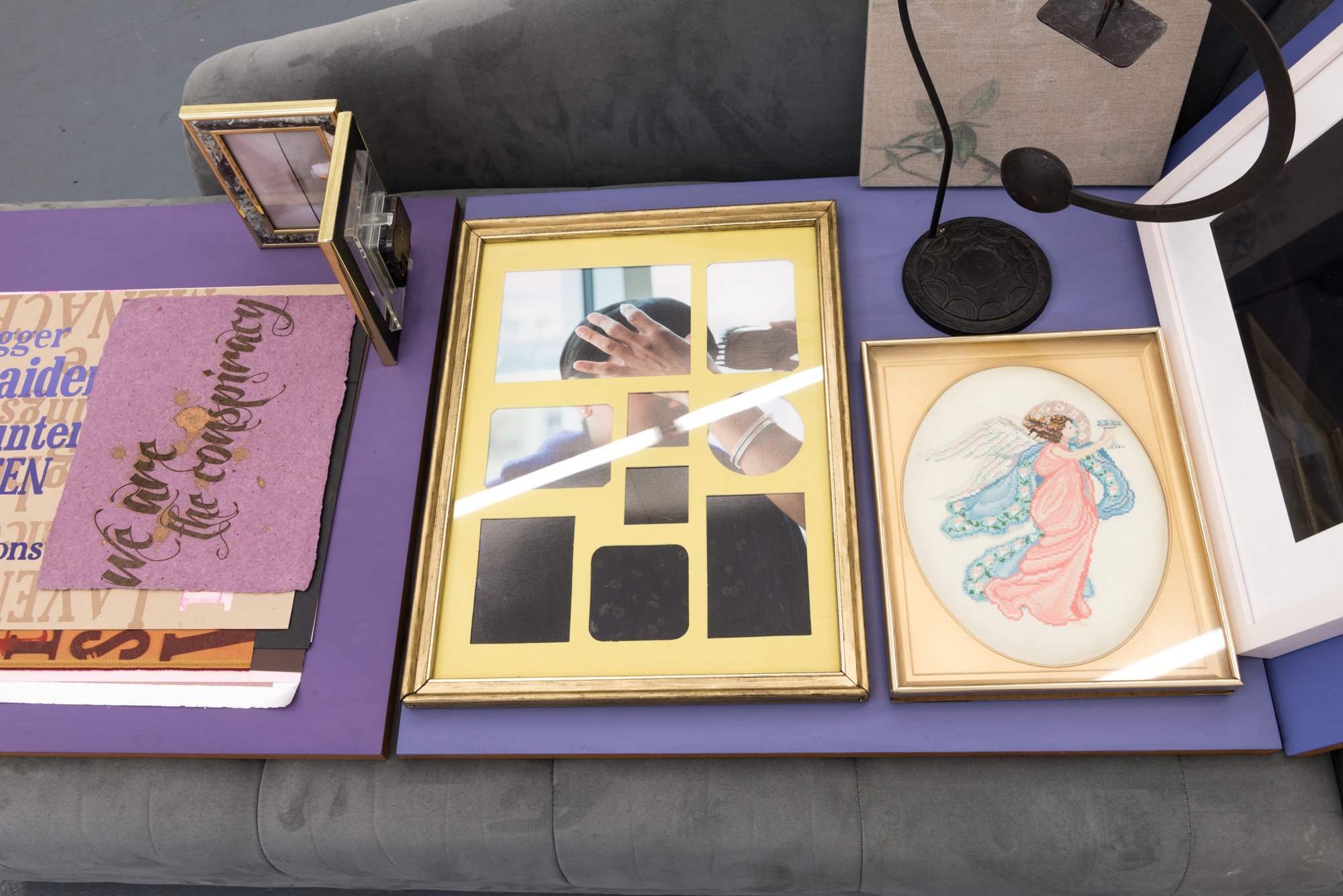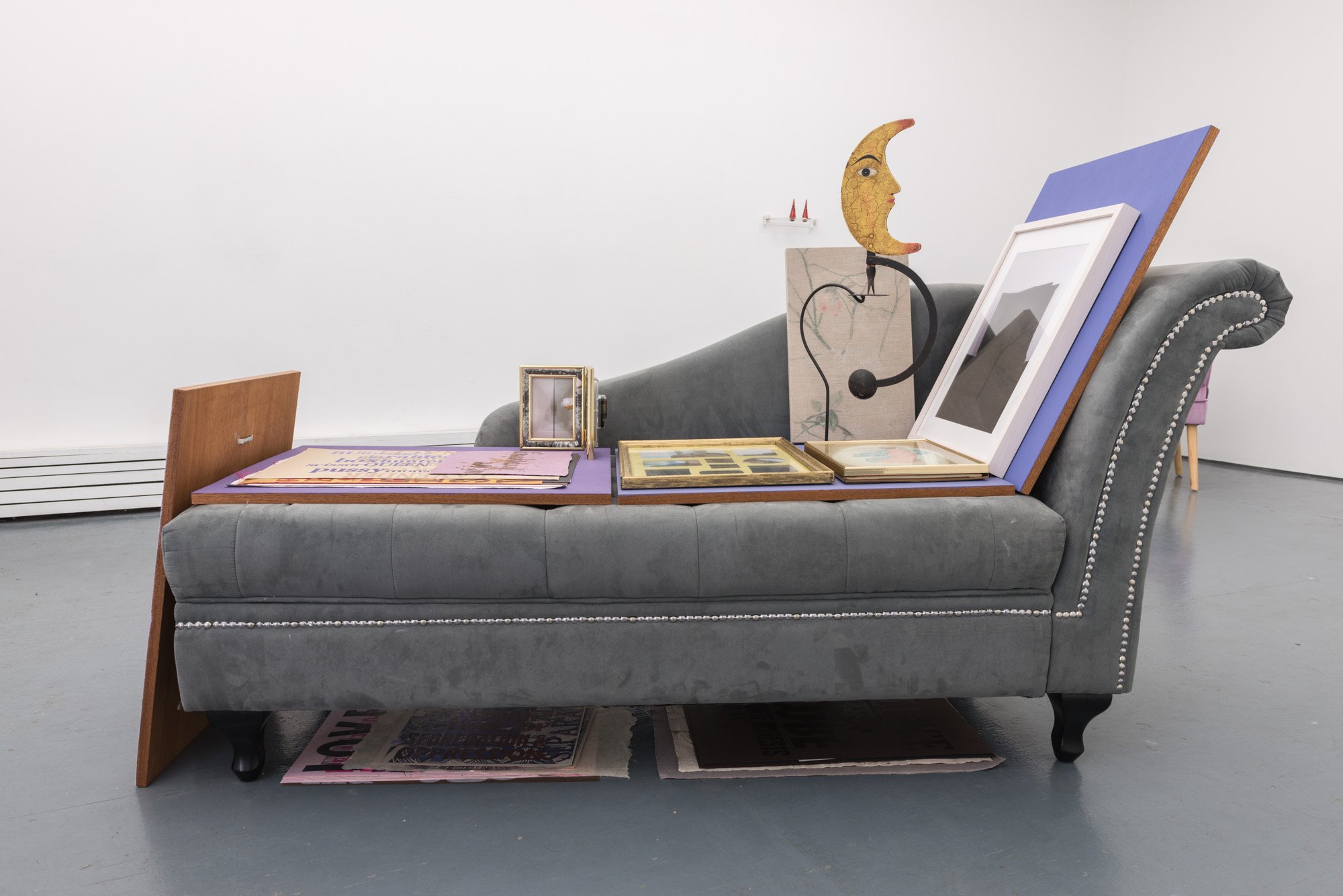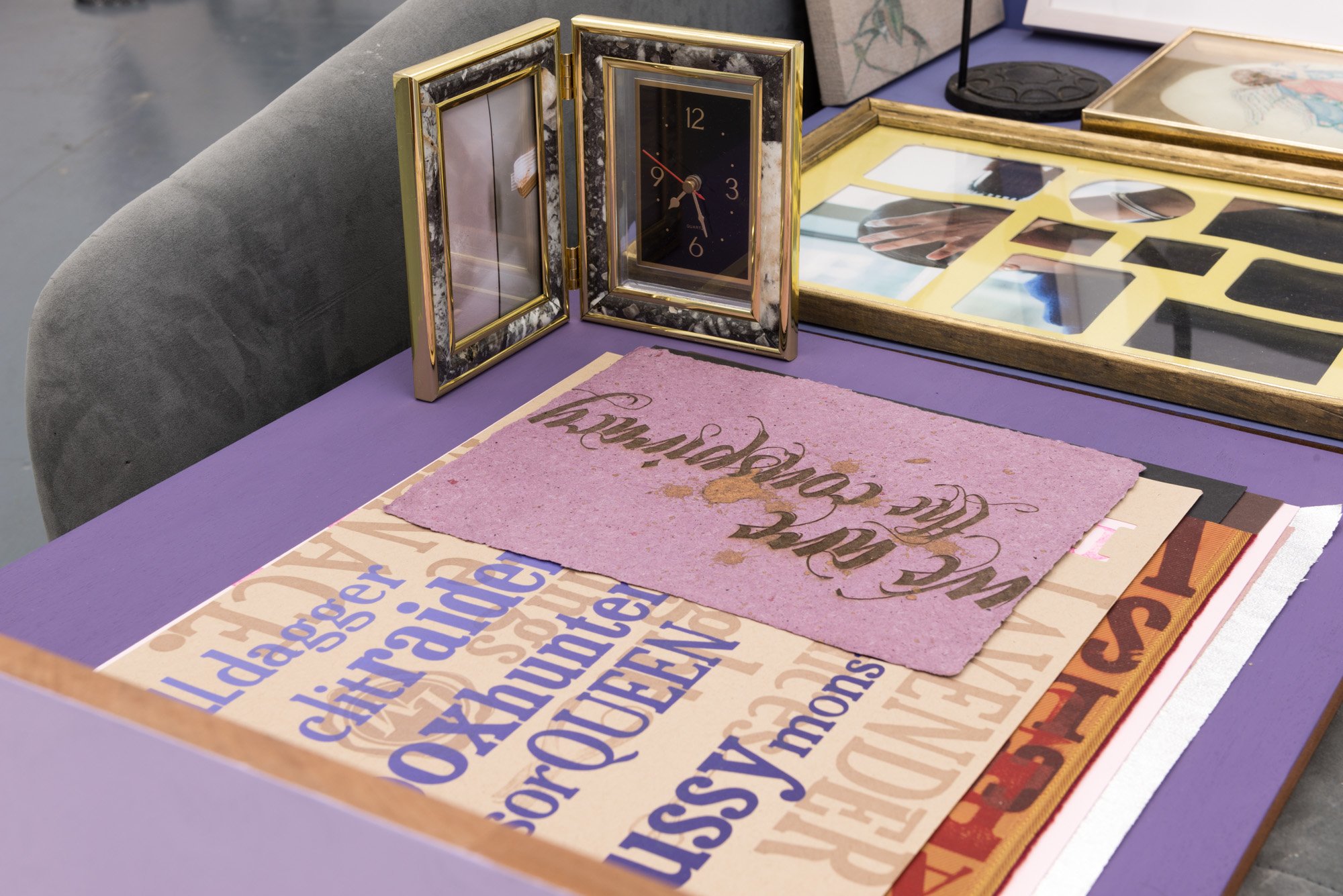Artists Name, Title, Year, Materials, Dimensions (use the word inches not quote marks ” )
NEW YORK
Matt Morris: Splitsville smells like irises
Aug 3 – Sep 9, 2018
Opening Reception: Fri, Aug 3, 6-9 pm
“And in my mind, I am watching the creeping excesses of those irises. Their purple-blue hearts. How they gather and wander. How they grow beyond the prescribed borders. And in my mind, this is where I choose to revisit him.”[1]“Sometimes I am empty for a very long time. I have no identity. At first it is frightening. And then it turns to an impulse of happiness. And then it stops.”[2]
Tiger Strikes Asteroid New York presents Splitsville smells like irises, an installation by Matt Morris that includes work by Christopher Backs, Lise Haller Baggesen, Rashayla Marie Brown, Angela Davis Fegan, Alejandro Jiménez-Flores, Lee Godie, Kelly Lloyd, James Morris, Aay Preston Myint, Alan Reid, Paul Mpagi Sepuya, and Clara Ursitti. As is typical in his exhibitions, Morris’ work rests between studio production and curation, amongst Readymades, loaned artworks, and questions that upset easily read positions of authorship. A cross-stitched needlework by his father accompany photographs, video, prints, painting, and olfactory artworks contributed from an international coterie of makers—peers in Morris’ Chicago community as well as friends and role models hailing from New York, Los Angeles, Vienna, Glasgow, and beyond.
“Ambiguity, duality, the most suspect words of all, they don’t hear them, don’t understand them.”[3]“Even in the most insignificant details of our daily life, none of us can be said to constitute a material whole, which is identical for everyone…our social personality is a creation of the minds of others.”[4]
These artists and artworks delve into an examination of code switching, resemblance, imitation, and fragmentation as a set of interrelated strategies by which conceptions of selfhood, subjecthood, and identity might be disrupted. The gathered works collapse across a furniture arrangement redolent of the psychotherapeutic environment, serving as an apparatus that signals embodiment, modes of care, and a proposition of “being together” that is predicated on introspection as well as the kind of looking that galleries typically support.
“Everything works. Everything is acceptable. I speak of ‘discourses of reference productive of subjectivity’. What matters to me is clarifying criteria for getting beyond the oppositions….”[5]
While the inquiries that inform this exhibition proceed from longer stretching research questions about drag (as painting, as photography, as scent), queer formalism, and the ways that objects hold the potential to behave demonstratively to subvert codes of normativity in contemporary culture, there is also an urgency that prompts this project as a response to shifts in dominant power in the United States. What may have comfortably performed as playful investigations into how we theorize desire and selfhood previously is now distinguished as modes of survival that combine performed selves, upended authorships, and slippages between mediums and categories in order to philosophize forms of living beyond those fiercely defended by the Far Right in this country and in institutionally supported xenophobia around the world.
“If I’m loving ‘somewhere else,’ I am betraying the love of he or she who is waiting for me. If I am going off I am leaving, if I’m putting distance between us I already have to leave.”[6]
[1]Excerpt from the artist’s eulogy for his father, delivered 18 June 2018.
[2]Duras, Marguerite. No More. New York: Seven Stories Press, 1998. Print, p. 15.
[3]Duras, Marguerite. “Wonderful Misery.” Green Eyes. New York: Columbia University Press, 1990. Print, p. 127.
[4]Proust, Marcel. Swann’s Way: In Search of Lost Time, Vol. 1. New Haven: Yale University Press, 2013. Print, p. 21.
[5]Guattari, Félix, in conversation with Bracha Ettinger. “From Transference to the Aesthetic Paradigm.” A Shock to Thought: Expression after Deleuze and Guattari. Print, p. 240–241.
[6]Duras, Marguerite. “Solitude.” Green Eyes. New York: Columbia University Press, 1990. Print, p. 68.
Tiger Strikes Asteroid’s 2018 Exhibition Program is sponsored, in part, by the Greater New York Arts Development Fund of the New York City Department of Cultural Affairs, administered by Brooklyn Arts Council (BAC).






















